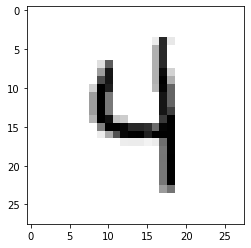PyTorch Beginner's Tutorial (2) - Using a BP Neural Network to Recognize MNIST Handwritten Digits
Blog Content
In this article, we’ll implement a handwritten digit recognition model for the MNIST dataset using a basic BP (backpropagation) neural network. Let's dive right in.
Import Required Packages
```python import os import numpy as np import torch import torchvision import matplotlib.pyplot as plt from time import time from torchvision import datasets, transforms from torch import nn, optim ```
Set Up Transformations
We define a transform object to standardize the images in the dataset:
```python
transform = transforms.Compose([transforms.ToTensor(),
transforms.Normalize((0.5,), (0.5,)),])
```
Load Training Data
We’ll load and, if necessary, download the training dataset using PyTorch’s API:
```python
train_set = datasets.MNIST('train_set', # save here
download=not os.path.exists('train_set'), # download if not exists
train=True, # use training set
transform=transform # apply transform
)
train_set
```
```
Dataset MNIST
Number of datapoints: 60000
Root location: train_set
Split: Train
StandardTransform
Transform: Compose(
ToTensor()
Normalize(mean=(0.5,), std=(0.5,))
)
```
After downloading, we’ll see the training set contains 60,000 images. Next, we download the test dataset:
```python
test_set = datasets.MNIST('test_set',
download=not os.path.exists('test_set'),
train=False,
transform=transform
)
test_set
```
```
Dataset MNIST
Number of datapoints: 10000
Root location: test_set
Split: Test
StandardTransform
Transform: Compose(
ToTensor()
Normalize(mean=(0.5,), std=(0.5,))
)
```
The test dataset has 10,000 images.
Create Data Loaders
Next, we’ll use DataLoader to manage batching for both training and testing datasets:
```python train_loader = torch.utils.data.DataLoader(train_set, batch_size=64, shuffle=True) test_loader = torch.utils.data.DataLoader(test_set, batch_size=64, shuffle=True) dataiter = iter(train_loader) images, labels = dataiter.next() print(images.shape) print(labels.shape) ```
``` torch.Size([64, 1, 28, 28]) torch.Size([64]) ```
The output shows that each batch contains 64 grayscale images, each sized 28x28 pixels. Let’s display one image:
```python plt.imshow(images[0].numpy().squeeze(), cmap='gray_r'); ```

With this, our initial setup is done.
Define the Neural Network
```python
class NeuralNetwork(nn.Module):
def __init__(self):
super().__init__()
"""
Define the first linear layer:
Input: image (28x28 pixels)
Output: input to the first hidden layer with 128 units
"""
self.linear1 = nn.Linear(28 * 28, 128)
# Apply ReLU activation in the first hidden layer
self.relu1 = nn.ReLU()
"""
Define the second linear layer:
Input: output from the first hidden layer
Output: input to the second hidden layer with 64 units
"""
self.linear2 = nn.Linear(128, 64)
# Apply ReLU activation in the second hidden layer
self.relu2 = nn.ReLU()
"""
Define the third linear layer:
Input: output from the second hidden layer
Output: output layer with 10 units
"""
self.linear3 = nn.Linear(64, 10)
# Apply softmax for normalization at the output layer
self.softmax = nn.LogSoftmax(dim=1)
# Alternatively, define the model using nn.Sequential:
self.model = nn.Sequential(
nn.Linear(28 * 28, 128),
nn.ReLU(),
nn.Linear(128, 64),
nn.ReLU(),
nn.Linear(64, 10),
nn.LogSoftmax(dim=1)
)
def forward(self, x):
"""
Define the forward pass of the neural network
x: image data with shape (64, 1, 28, 28)
"""
# Reshape x to (64, 784)
x = x.view(x.shape[0], -1)
# Forward propagation
x = self.linear1(x)
x = self.relu1(x)
x = self.linear2(x)
x = self.relu2(x)
x = self.linear3(x)
x = self.softmax(x)
# Alternatively, this could be done using x = self.model(x)
return x
```
```python model = NerualNetwork() ```
After defining the neural network, we set up the loss function, using Negative Log Likelihood Loss (NLLLoss), which is common for classification tasks.
```python criterion = nn.NLLLoss() ```
Then, we define the optimizer, using Stochastic Gradient Descent with a learning rate of 0.003 and the default momentum of 0.9 (to reduce overfitting).
```python optimizer = optim.SGD(model.parameters(), lr=0.003, momentum=0.9) ```
With the setup complete, we start training the dataset:
```python
time0 = time() # Record the start time
epochs = 15 # Train for 15 epochs
for e in range(epochs):
running_loss = 0 # Initialize the loss for the epoch
for images, labels in train_loader:
# Forward pass to get predictions
output = model(images)
# Compute the loss
loss = criterion(output, labels)
# Backward pass
loss.backward()
# Update weights
optimizer.step()
# Clear gradients
optimizer.zero_grad()
# Accumulate the loss
running_loss += loss.item()
else:
# Print the loss after each epoch
print("Epoch {} - Training loss: {}".format(e, running_loss/len(train_loader)))
# Print total training time
print("\nTraining Time (in minutes) =",(time()-time0)/60)
```
``` Epoch 0 - Training loss: 0.6462286284117937 Epoch 1 - Training loss: 0.27847810615418056 ... Epoch 13 - Training loss: 0.056689855163551565 Epoch 14 - Training loss: 0.05361823974547586 Training Time (in minutes) = 2.9436919848124186 ```
On my machine, the training took just over 2 minutes to complete, with the loss decreasing steadily.
Next, we’ll evaluate the model:
```python
correct_count, all_count = 0, 0
model.eval() # Set the model to evaluation mode
# Load images batch by batch from the test_loader
for images,labels in test_loader:
# Loop through the batch to evaluate each image
for i in range(len(labels)):
logps = model(images[i]) # Forward pass to get predictions
probab = list(logps.detach().numpy()[0]) # Convert prediction to a list of probabilities
pred_label = probab.index(max(probab)) # Get the index of the highest probability as the predicted label
true_label = labels.numpy()[i]
if(true_label == pred_label): # Check if the prediction is correct
correct_count += 1
all_count += 1
print("Number Of Images Tested =", all_count)
print("Model Accuracy =", (correct_count/all_count))
```
``` Number Of Images Tested = 10000 Model Accuracy = 0.9741 ```
The model achieved an accuracy of 97.41% on the test dataset.
References
Handwritten Digit Recognition Using PyTorch — Intro To Neural Networks: https://towardsdatascience.com/handwritten-digit-mnist-pytorch-977b5338e627




